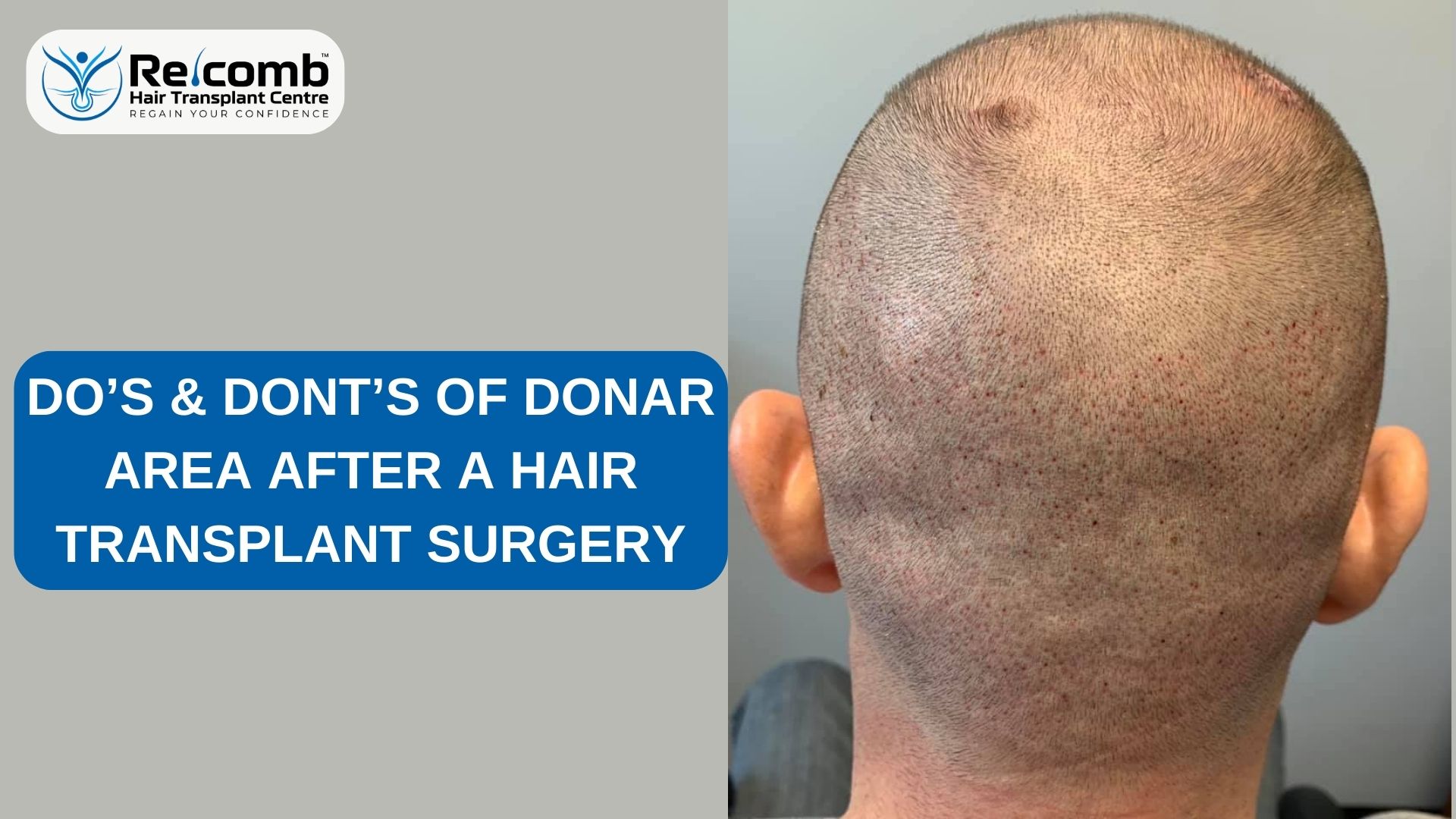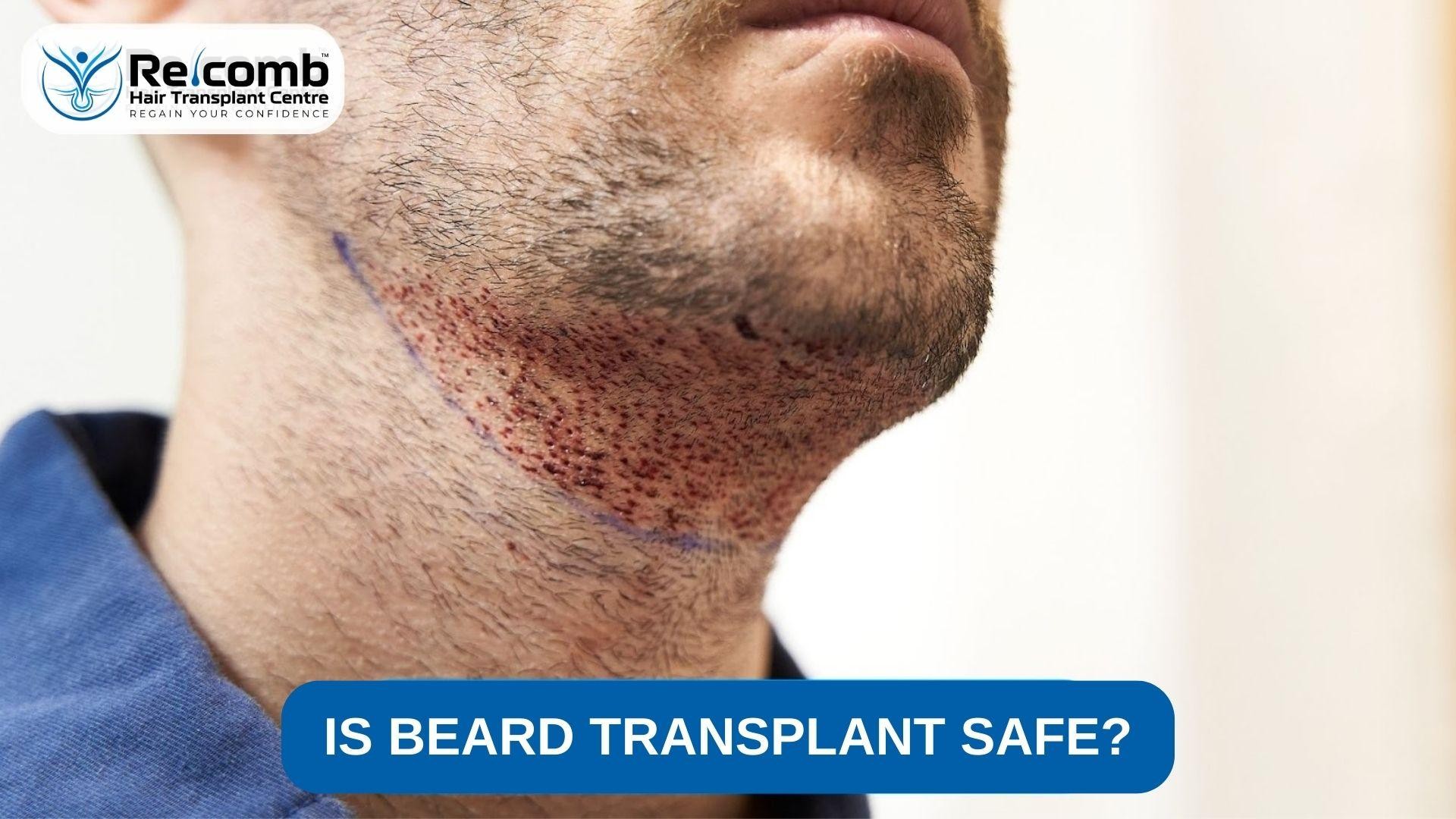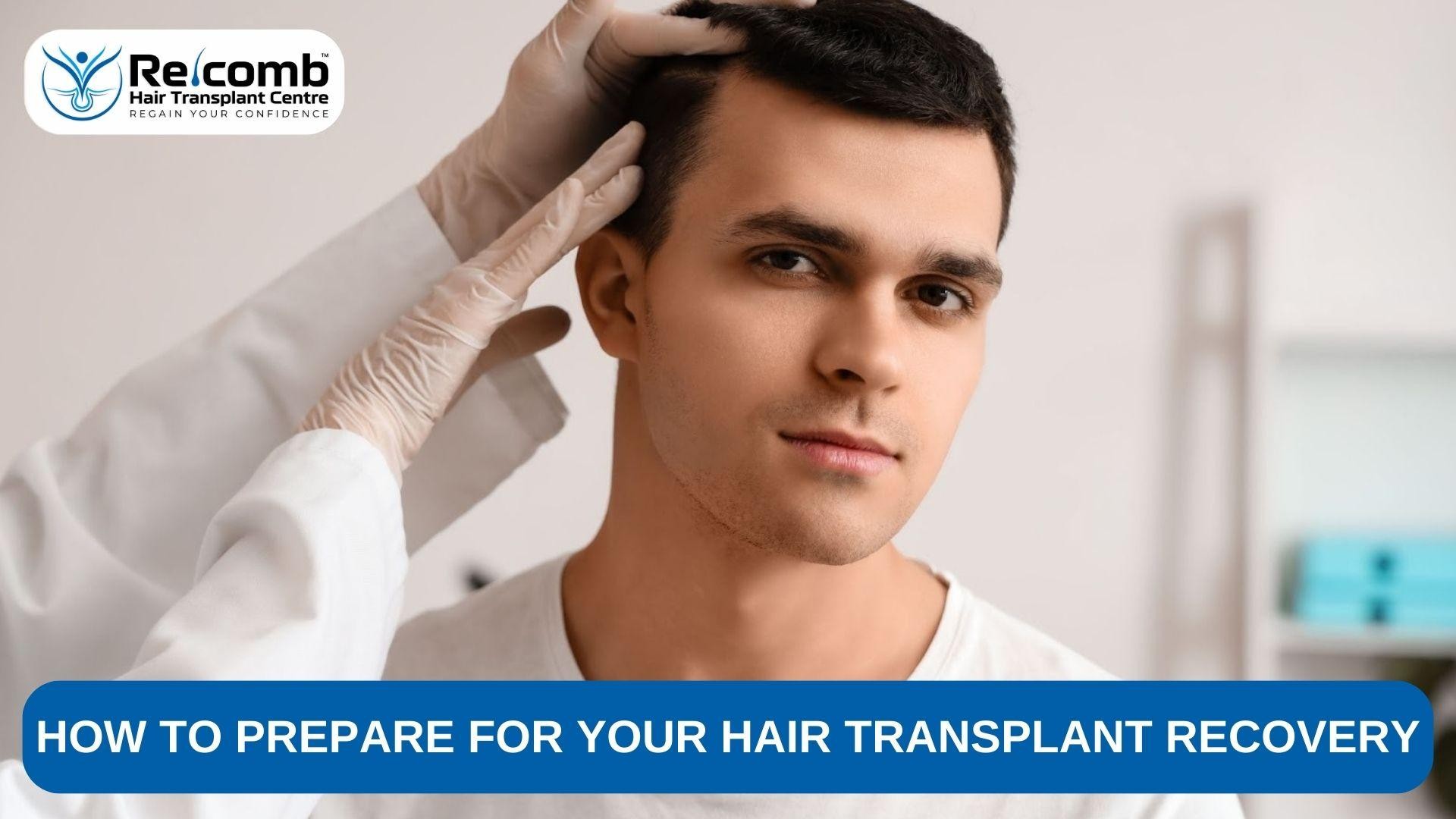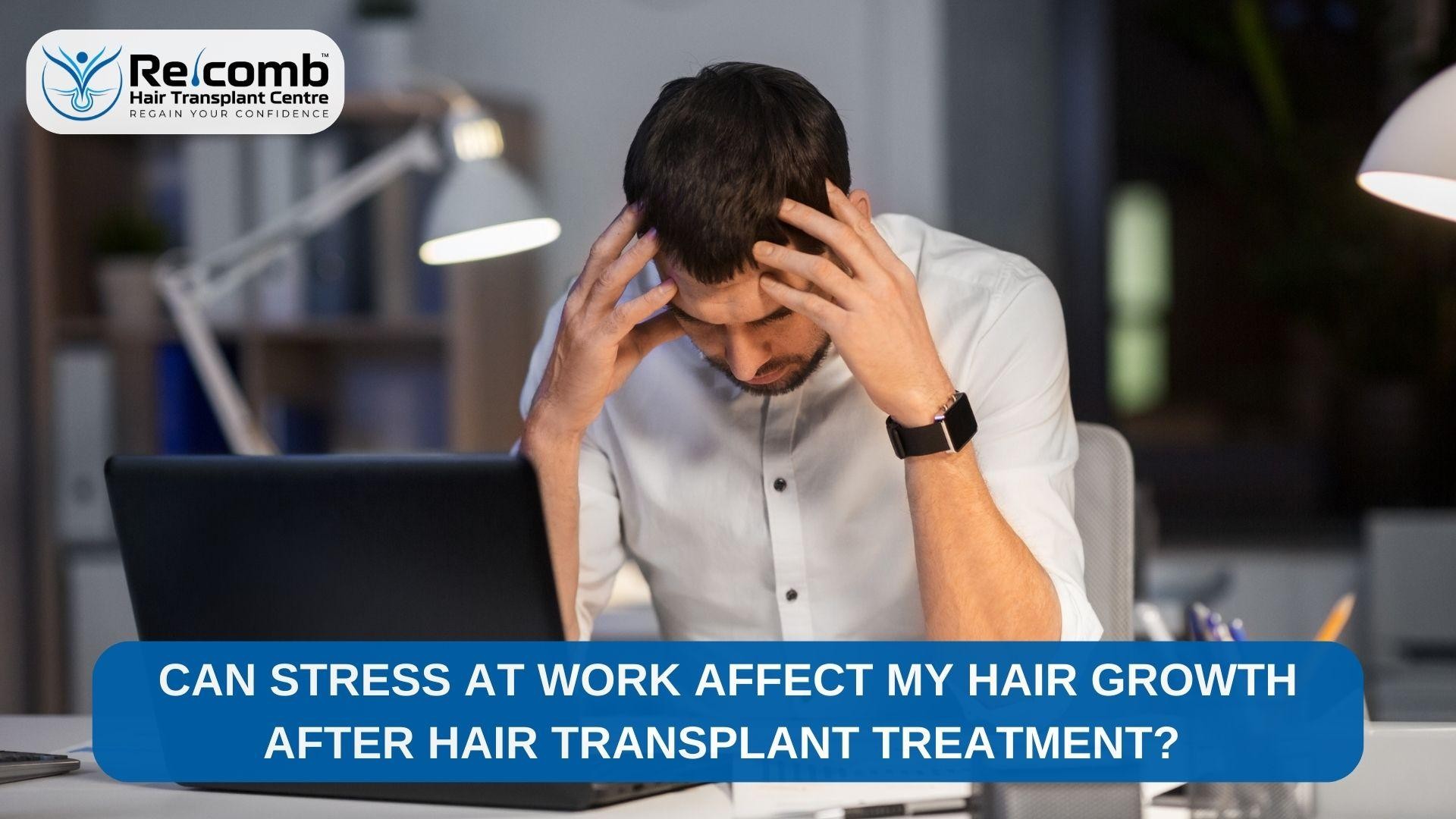
Hair transplant surgery is the most opted procedure for those dealing with hair loss. The success of the transplant depends as much on the skill of the surgeon as on how well the patient cares for both the recipient and donor areas post-surgery. The best hair transplant doctor in Surat share that care for the donor area after hair transplant is overlooked most of the times. While most people focus on the newly implanted grafts, the donor area — where the hair follicles were extracted — requires just as much attention. Proper aftercare ensures quick healing, prevents infections, and maximizes the overall success of the procedure.
In this blog, experts from the best hair transplant centre in Surat, Recomb Hair Transplant Centre, walk you through the essential Do’s and Don’ts of caring for the donor area after a hair transplant.
Do’s: How to Take Care of the Donor Area Properly
1. Follow Your Surgeon’s Instructions
Once you have finalized the cost of hair transplant in Surat, your surgeon will provide a set of aftercare guidelines tailored to your specific procedure. Whether you underwent Follicular Unit Extraction (FUE) or Follicular Unit Transplantation (FUT), your post-operative care might differ slightly. Make sure you follow the prescribed medications, antibiotics, and pain relievers as instructed.
2. Keep the Area Clean
Gentle cleansing of the donor area is crucial to prevent infections. Most surgeons recommend waiting 24 to 48 hours before washing the area. Use a mild, sulfate-free shampoo and avoid harsh scrubbing. Pat the area dry instead of rubbing it.
3. Stay Hydrated and Eat a Nutrient-Rich Diet
Drinking plenty of water and eating foods rich in vitamins, minerals, and protein can aid in faster healing. Zinc, biotin, iron, and vitamin C play a crucial role in hair growth and recovery.
4. Sleep With Your Head Elevated
To minimize swelling and discomfort, sleep with your head elevated using two or more pillows. Some patients prefer using a neck pillow to prevent any accidental contact with the donor or transplanted areas.
5. Use Recommended Ointments or Sprays
Your surgeon may recommend a saline spray or a prescribed ointment to keep the donor area hydrated and prevent excessive scabbing. Applying these products correctly can help speed up recovery.
6. Be Gentle When Combing or Styling
If you need to comb your hair, be very careful not to pull or tug at the donor area. Avoid using hair dryers, hair gels, or styling products for at least two weeks post-surgery.
7. Stay Away From Sunlight
Direct sun exposure can irritate and damage the healing donor area. If you need to go outside, wear a loose-fitting hat or a scarf to protect the area from harmful UV rays.
Don’ts: What to Avoid After Hair Transplant Surgery
1. Don’t Scratch or Pick at the Scabs
Itchiness is a normal part of the healing process, but scratching the donor area can cause damage, lead to infections, or result in scarring, say the best hair transplant surgeons in Surat available at Recomb hair transplant centre. Instead, use a saline spray or consult your doctor for anti-itch medication if necessary.
2. Avoid Alcohol and Smoking
Alcohol and nicotine can slow down the healing process by reducing blood circulation to the scalp. Avoid drinking alcohol for at least one week, and if you smoke, consider quitting or at least refraining from it for two to four weeks post-surgery.
3. Don’t Engage in Strenuous Activities
Avoid activities that increase blood pressure and sweating, such as heavy workouts, running, or lifting weights, for at least two weeks. Excessive sweating can lead to irritation and infections in the donor area.
4. Don’t Wear Tight Hats or Helmets
While protecting the donor area from dust and sunlight is essential, tight hats, helmets, or caps can create friction and disturb the healing process. Opt for loose-fitting headwear if necessary.
5. Avoid Swimming Pools and Saunas
Chlorine from swimming pools and excessive heat from saunas can irritate the donor area and slow down healing. It’s best to wait at least three to four weeks before resuming these activities.
6. Don’t Use Harsh Hair Products
Shampoos containing sulfates, parabens, and alcohol can cause dryness and irritation. Stick to mild, doctor-approved shampoos for the first few weeks.
7. Avoid Sleeping on Your Back
While sleeping on your back won’t directly harm the donor area, it might lead to pressure on the recipient area, affecting the survival of newly implanted grafts. Try sleeping in an elevated position for the first week.
Final Thoughts
Caring for the donor area after a hair transplant is just as important as looking after the newly transplanted grafts. Proper hygiene, avoiding excessive physical strain, and following your surgeon’s recommendations will ensure a smooth recovery process and optimal hair regrowth.
If you experience persistent pain, swelling, or signs of infection (such as pus or excessive redness), don’t hesitate to contact your surgeon immediately.
By following these do’s and don’ts, you can ensure the best hair loss treatment in Surat with a hassle-free recovery and enjoy the full benefits of your hair transplant in the months to come.






